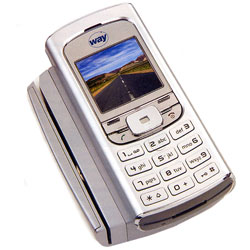January 16th, 2008 by Jamie Estep
Why are there early termination fees?
Filed in: Merchant Accounts | 3 comments
Let me start off by saying that I am not a fan of early termination fees. I believe that if service providers were are as good as they claim, then there would be absolutely no need to lock someone into a two or three year contract with a several hundred dollar termination fee. Early termination fees make the processing industry look like the cellular industry, which I can honestly say is a bad thing.
If every provider is as good as they claim, then why three year contracts?
There are a few reasons why service providers have early termination fees.
First there is fraud prevention. When a business has to sign a three year contract, there is a much lower chance that they will commit fraud and run. Services like Paypal are plagued by fraud, in part because anyone can sign up and instantly activate an account. Your provider is also taking on a lot of liability to accept your business (They are liable for every penny that you process!) and a termination fee is a way they can protect themselves a little.
Secondly, it actually takes a lot of work to setup a business for credit card processing. There are multiple steps that take place behind the scenes, involving multiple people and departments. It normally takes several hours of work just to process an application. Whether the business ever processes or not, the provider has spent several hours of manpower before anything is even finalized. Add another hour or more for programming a terminal, and then a few more for training and deployment, and the time really adds up just to get someone setup.
Up until about six years ago in the US, and still in some other countries, it was common if not standard for business owners to pay several hundred dollars just to apply for a merchant account. At the time it was seemingly a good idea, and it reduced the number if frivolous account requests and price shopping. That money was normally set to cover the cost of manpower to get a business approved, programmed, deployed and fully processing. Since it is rare to ever see an application fee anymore, that money is often made up with a termination fee.
Lastly, providers just want to keep their customers. Whether a termination fee is the right way to do it is debatable, but as a provider, when you see a customer switch to another company because they offered a much lower rate, which in reality saves them about two cents per month, it’s more than frustrating. Often a new provider comes along with creative rates, and the customer ends up paying more.
Many service providers simply don’t have a choice:
Many of the back-end companies that underwrite merchant accounts require minimum contract terms. There are a lot of providers that have no choice but to require a contract with their customers. It doesn’t make them a bad company as long as they are providing a service worth the contract.
Just because there is a contract, doesn’t mean the company is bad:
As a business owner, you can still get a great service from a company with a termination fee. But, you should do extra research to ensure that the company you are going to be processing with now, is the one you want to be with in a few years. Having a contract does not necessarily mean you are dealing with a bad company, but it does mean that you need to make a commitment, so make an educated commitment to avoid any surprises.
If you are in the market to start accepting credit cards, I recommend reading these before you start shopping:
The processing fee is the least important one on your application!
Avoiding a Bad Merchant Service Provider













